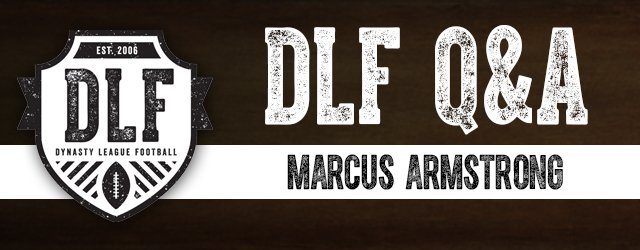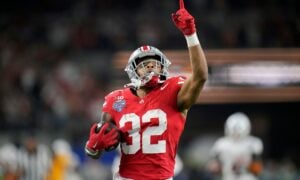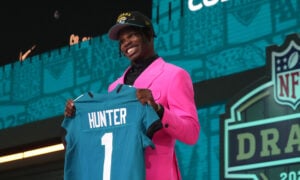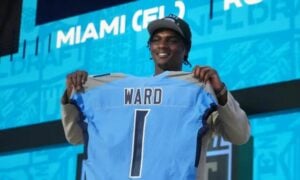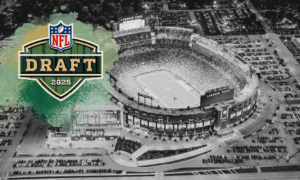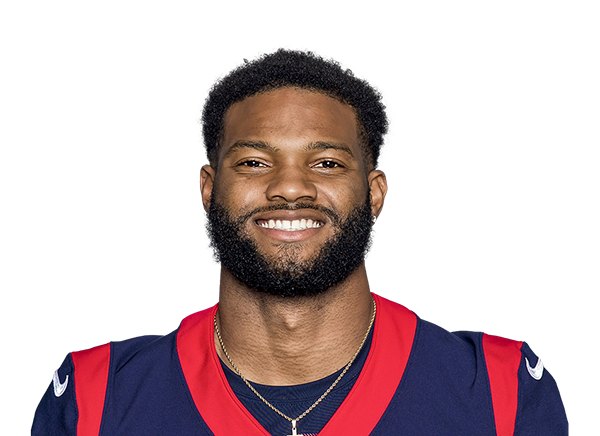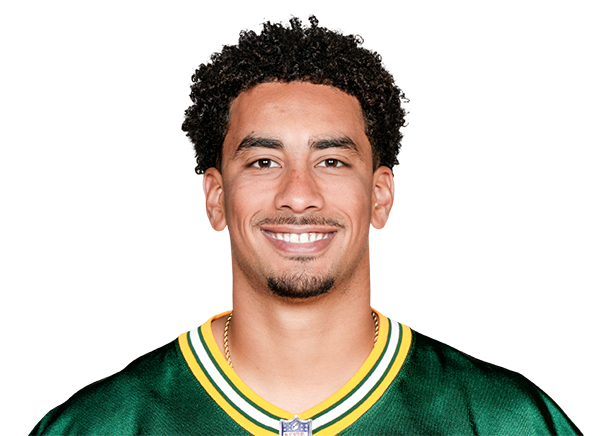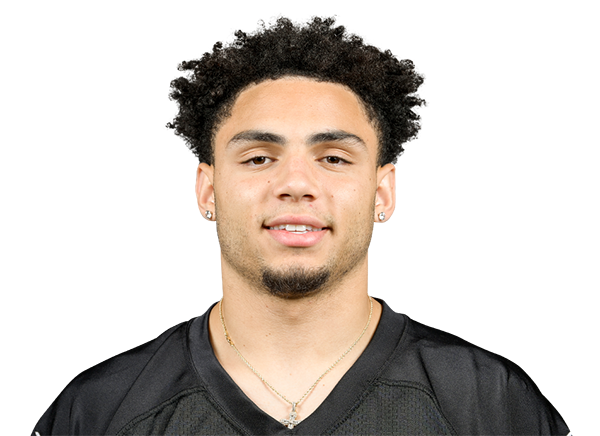DLF Q&A: Marcus Armstrong
It’s hard for me to say where I first heard of Marcus Armstrong and his awesome website (Mock Draftable), but as an analytics person, I geeked out the moment I laid eyes on it. Normally, I would tell you to visit now and come back after you have a peek, but I guarantee that you will fall down that rabbit hole quickly. In a nutshell, he has taken the NFL Combine measurables and has created a format that makes it simple to compare scores across positions, to past prospects, and to familiarize yourself with the 2015 draft class.
With the draft forthcoming, I can’t tell you how many times I have referenced Marcus’ work for NFL mock drafts, DLF rookie mocks, and just when I am looking for something to do on a weekday night. In this Q & A, I will focus on Marcus’ work and his opinions on this upcoming rookie class.
DLF: Marcus, thanks for taking the time to answer some questions. As I said above, I really appreciate all the work you do and your willingness to share it with the masses. We’ll start with an easy one here: tell us a little bit more about yourself and how Mock Draftable came to be.
Marcus: Absolutely! Always happy to answer questions. So yeah, I’m a software guy and a Jets fan. Started getting involved in the draft community, and in doing so wanted to be able to do some of my own analysis, so I compiled a database of measurables specifically to be able to do the player comparisons functionality.
DLF: One of the most difficult tasks of any evaluator is the balance of quantitative research like yours and the qualitative aspects of football. Do you watch film in addition to the analytics you do at Mock Draftable and what is your perspective on the value of game film?
Marcus: Of course! Analytics, especially ones constrained to exclusively measurables are inherently limited, so for my own player rankings I’m always careful to watch whatever I can (And the guys at DraftBreakdown are absolutely clutch in allowing that to happen)
DLF: I noticed a table you have for positional averages and standard deviations for the various combine tests. Are they simply meant to be guidelines to help readers understand the variance of results among positions in key drills or is there a moment where you become excited or concerned for a player’s performance?
Marcus: Yeah, the standard deviations and averages are (in my opinion) really helpful context information about combine performances. Perhaps it would be more helpful if I listed the z-score of each measurement of a player, but the tables are at least a step in the right direction.
[inlinead]DLF: One of the interesting features of your work is the “Similar Players” that your individual player pages have, looking back 15 years to find comparable athletes. How do you recommend someone views these comparisons and have you seen a relationship to those and future performance?
Marcus: Yeah, the similar players concept was really the driving force behind making the site, so it’s something I’ve spent a fair amount of time looking at. There are basically two things you can take away from those numbers: the first is a list of guys who would profile, at least athletically, in a similar way. I personally find that helpful from a ceiling/floor perspective. The second is how “unique” an athlete is—If a particular guy’s top comparison is really weak, it indicates that he’s pretty far removed from the rest of the players at his position. For example, Byron Jones has a top comparison that’s only 65% similar (quite low), which makes sense, as his combine performance is arguably one of the greatest of all time.
DLF: A follow up to the “Similar Players.” Have you ever seen a result and done a double take? What’s an example of a player comparison that took you by surprise?
Marcus: I think Jaelen Strong’s list this year is pretty surprising. I view him as a bit more of big play threat than guys that pop up.
DLF: I just switched Nick Marshall’s comparisons to the cornerback position. Should he be feeling good that Chris McAlister is his second most similar player?
Marcus: Haha, probably. Of course, corner is one of those positions that’s so hard to dominate based on pure athleticism, so it might be slow to happen, but it at least shows that he should have a shot at it.
DLF: Seriously though, let’s talk about some of the incoming rookies. Who stood out to you at the running back position? Was there anyone that surprised in a positive or negative way?
Marcus: I’ll admit I expected a bit more out of Josh Robinson, and was very impressed with Ameer Abdullah’s performance. In terms of some smaller school standouts, Zach Zenner and David Johnson come to mind.
DLF: Mike Davis was a player who I have had trouble pegging since this draft process started. What did his measurements and combine performance tell you? Should I be worried his strongest player comparison is Trent Richardson?
Marcus: I wouldn’t worry about that at all. Trent’s biggest problem is his vision and decision making as a back. Athletically, he’s a perfectly good RB. And as far as Davis goes, he improved on his numbers pretty significantly at his Pro Day, which in my opinion is probably a more accurate representation of his abilities, since on tape he doesn’t look like a 4.6 kind of guy.
DLF: While Todd Gurley was unable to participate in the drills due to his knee injury, Melvin Gordon did go through the Combine process. How would you rate his performance? Do his results in the combine and any subsequent tape you have seen affirm his ranking among the top rookie backs and how does he compare to top running backs in past years?
Marcus: Gordon looks like the real deal to me. An 82 agility score and 77 explosion score are excellent numbers (And I wouldn’t worry too much about his 10 yard split—I’ve seen times as low as 1.51 on that), and his performances at Wisconsin were fantastic. Looks like every bit of a 3-down back to me. Obviously, from a fantasy perspective, his ranking is going to vary widely based on the situation he lands in, but from my perspective he’s probably the back I’d want on my team the most in this class (Even though Gurley probably ends up with the higher grade).
DLF: Let’s switch over to the wide receivers. After the historic 2014 rookie class, do the numbers suggest that the 2015 class have any similarities in terms of elite talent or depth? What are your overall thoughts on this year’s wide receiver rookie class?
Marcus: Depth is every bit as good as last year. Personally I’d rank the top of last year’s class higher than those at the top of this one, but it’s still a situation where I think we’ll see contributors at WR into the 4th round. My 2014 rankings went Evans / Beckham / Watkins, and if I were to “merge in” the top guys out of this class, they’d probably all have to go behind those guys, but in terms of finding guys in the second or third, there’s no reason Dorsett, Hardy, and Waller (among many others) shouldn’t find a productive role this season.
DLF: The dynasty community has largely shared the opinion that the top 4 wide receivers are some order of Kevin White, Amari Cooper, Devante Parker, and Dorial Green-Beckham. Do you agree with that? Where do you land on the top receivers in this class?
Marcus: Yeah, I think that pretty much has to be the list. I’d go Cooper / White / Parker myself. DGB is a really tough one, as it depends so much on the situation he’s drafted into. Obviously he’s an excellent player, but he’s limited in terms of the routes he was asked to run and is a rough projection into a lot of offenses because of that, never mind the off field problems that beg the question of whether or not he’ll even play. As far as some of the other guys, I think we can expect Dorsett to have a pretty significant year one and have a pretty defined role as a speed guy in the future (his top comparison of DeSean Jackson rings pretty true to me). DeAndre Smelter looked excellent prior to his ACL, so depending on how his recovery is going, he could end up being a steal. I’m also a huge fan of Jaelen Strong, and with where he’s projected to go in the draft, he’d also be a candidate to be paired with a strong Quarterback situation.
DLF: A small school receiver that has piqued the interest of dynasty owners has been Tre McBride. Are there any considerations you make in your analysis of a player from a small school compared to one from a major conference? What is your overall assessment on McBride?
Marcus: I haven’t watched McBride yet, actually (he’s 4-5 prospects back on my queue right now). That said, yeah, when you’re watching the tape on somebody like that it’s critical that you make a note on every snap of the level of competition that he’s dealing with. But that said, his combine numbers are incredible… An 88 speed score, 88 agility score, and 87 explosion score indicate an extremely strong athlete, and if the tape matches up to those numbers, watch out.
DLF: Last rookie receiver question for you. I’ve seen some analysts who think Ty Montgomery should switch from receiver to running back. Where does your work say he would be a better fit?
Marcus: Well, as you can see for yourself, Montgomery’s overall numbers are significantly more impressive for a running back than at wide receiver, though, he does have that always-exciting Larry Fitzgerald comparison at WR. That said, the film certainly lines up with an RB in my mind.
DLF: I remember a Twitter post where you talked about using Byron Jones’ combine results to estimate his 40-yard dash at his pro day (he did not run at the combine). Talk a little more about how you are able to do that and how you deal with guys like Jones who pushes the boundaries of historical combine performance.
Marcus: Sure, yeah, as you can see from the site, I’ve got a good number of data points at this point, but sometimes some key players have missing data. This is a pretty common problem in statistical research in general, so there are some well understood and developed approaches, a few of which are in use on my site right now. The most obvious is to use the average when you don’t know any better, which is how the player similarity scores are calculated.
But much more appropriate is use of regressive imputation to determine a “best guess” for a measurement based on the data we do have. Intuitively, a 6’6” WR is unlikely to run a 4.5, even if that is the average for a WR, and using historical data can help the computer to understand that. So that’s the basis of what the imputation process I’ve been using does. I haven’t yet posted those “best guess” scores on the site in a broad fashion, though I do have them (so if anybody is interested in a particular estimation, just ask me!). Right now, however, they are in use in providing the Size/Speed/Agility/Explosion scores that were added to the site last week.
As far as Byron goes, he’s a unique athlete, as I’ve already mentioned. The model identified that and was projecting him at times around 4.25. In reality, he ended up running something in the neighborhood of 4.4. The unfortunate problem is that toward the ends of fit curves, the margin for error is always going to be the highest, as those are the areas of the graph that are least understood. But we’ve gotta try!
DLF: Fill in the blank. The 2015 skill position rookie who is being underestimated is ___________________.
Marcus: Amari Cooper. He’s a fantastic prospect who’s getting overlooked for flashier players, but in my mind, he’s the far and away top receiver in the class.
DLF: Everyone calls the quarterback class weak after the top two. Give me a signal caller we shouldn’t sleep on.
Marcus: Chris Bonner. Strong armed guy who could impress if he ends up in the right situation. Might take a while, but I could see it happening.
DLF: This year’s tight end crop doesn’t appear to be very strong. What’s a name that is flying under the radar?
Marcus: Yeah, unfortunately, this is one area where this class just isn’t that impressive. I probably have the highest hopes for Blake Bell. His agility scores are elite, and he has prototype size to work with, even if he is a QB conversion.
DLF: What is one piece of advice you have for everyone referencing your great work and looking to dive into the numbers the way you have?
Marcus: The combine attempts to measure athleticism, but it’s just that: an attempt. Perspective there is important because it underscores the need for context, and the need to understand that there are different types of athleticism, some of which aren’t measured by anything tested at the combine (Body control is the element I see the biggest gap on, personally).
DLF: Marcus, I really appreciate you taking the time to let us in on your process, your thoughts about this year’s class, and being at the forefront of the age of analytics.
You can find Marcus on Twitter at @mockdraftable and don’t forget to visit and get addicted to Mock Draftable as well.
[ad5]
- Bowl Game Previews: CFB Playoff Semifinals - December 28, 2018
- The Narrative Fallacy and How it Compels Us - May 13, 2017
- 2017 NFL Draft – College Wide Receiver AIR - April 27, 2017



